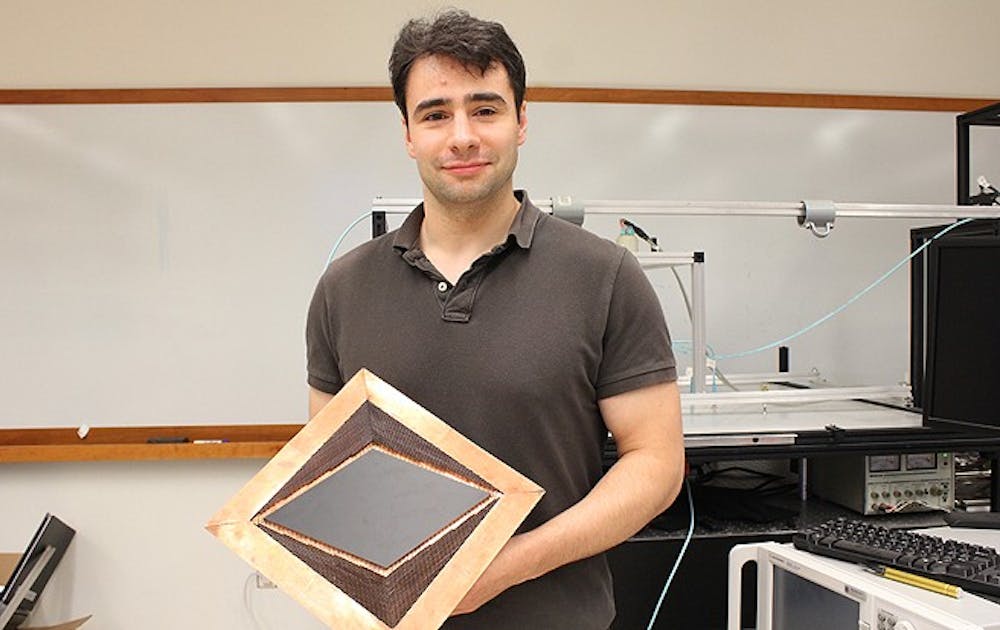It is not too often that a Duke professor and his student get to write the words “we built the world’s first invisibility cloak” in The New York Times.
But that is exactly what Nathan Landy, a graduate student in electrical and computer engineering, and his mentor David Smith, William Bevan professor of electrical and computer engineering, did last November.
Twenty-nine-year-old Landy splits his time between researching cloaking technology and lifting weights competitively. His path to creating the invisibility cloak began in 2006 when he got interested in the field of synthetic substances called meta-materials. This was when he worked as a lab tech for a few years at Boston College after graduating with a physics degree from Swarthmore College.
“People’s eyes may have glazed over at the mention of ‘meta-materials,” Landy said. “It wasn’t until I started working on the cloak that people got more interested.”
An invisibility cloak design Smith published in 2006 used meta-materials that can bend light and electromagnetic radiation around an object. This design, however, still showed reflections of the object it was concealing, preventing it from appearing truly invisible.
Landy helped improve on that design by putting it together in a way that minimized the reflections. Though perhaps not the actual invisibility cloak of Harry Potter fans’ dreams, the cloaking device does make objects invisible—in microwave light and two dimensions, that is.
Landy and Smith’s success was published in scientific journal Nature Materials in November, landing the pair not only in the opinion pages of The New York Times, but in just about every other news outlet, too—including The Colbert Report. Since then, Landy has heard all the jokes one can imagine, though none of them are too inventive.
“I get, ‘I’m surprised I can see you!’ a lot,” he said.
Improving the cloak from the current design—which is only invisible in certain conditions—will be substantially more difficult, Landy said, but he believes that one day, perhaps with a different design, a cloak will be built that any person could wear and become invisible.
The military helped fund Landy’s invisibility cloak research, in hopes that it could one day use his research to make invisibility materials. Landy pointed to NASA as a similar example of an agency that produces many valuable side projects as an unintended result of the space-related research it funds.
When Landy is not at his computer designing the objects of his research or running tests in the lab, he lifts weights. An avid weight lifter, Landy won a weight-lifting competition in Virginia last May before he was sidelined by injury. One of his goals is to qualify for a national competition. He also enjoys hiking by the Eno River.
“I don’t do a lot besides work and lift,” Landy said.
Landy met his wife, Stephanie, at Swarthmore and they lived together in Boston for three years before he got into Duke for graduate school and she got into Boston College for law school.
He hopes to graduate sometime this year and take a job in research and development for industry.
“My interests are also outside of the lab,” he said. “I want to make things that are going to be used.”
Working in research and development will give Landy a chance to work with new technologies and get “a little more out there,” he added.
Perhaps not as out there as invisibility cloaks, however.
Get The Chronicle straight to your inbox
Signup for our weekly newsletter. Cancel at any time.

